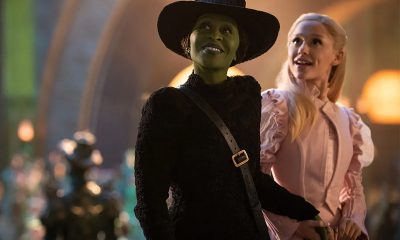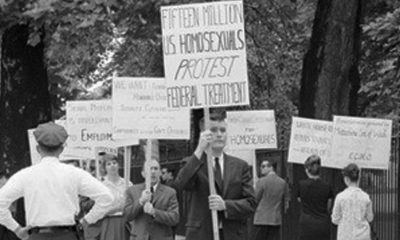Movies
‘Pink Narcissus’ reasserts queer identity in the face of repression
Gorgeously restored film a surreal fantasia on gay obsessions

Back in 1963, there really wasn’t such a thing as “Queer Cinema.”
Of course there had been plenty of movies made by queer people, even inside Hollywood’s tightly regulated studio system; artists like George Cukor and Vincente Minnelli brought a queer eye and sensibility to their work, even if they couldn’t come right out and say so, and became fluent in a “coded” language of filmmaking that could be deciphered by audience members “in the know,” while everyone else – including the censors – remained mostly oblivious.
Yes, the movie industry was adapting to the demands of a generation that had grown increasingly countercultural in its priorities, and topics that had once been taboo on the big screen, including the more or less open depiction of queerness, were suddenly fair game. But even so, you’d be hard-pressed to find examples of movies where being queer was not tied to shame, stigma, and a certain social ostracization that remained, for the most part, a fact of life. Hollywood may have been ready to openly put queer people on the screen, but the existence it portrayed for them could hardly have been described as happy.
Yet this was the setting in which a Manhattan artist named James Bidgood began a filmmaking project that would dominate his life for the next several years and eventually become a seminal influence on queer cinema and queer iconography in general – all executed, with the exception of an ambitious climactic sequence, in a cramped New York apartment utilizing elaborate handmade sets and costumes, which would define an entire queer aesthetic for decades to come. Though disputes with the film’s financiers would eventually cause him to remove his name from the project, resulting in years of anonymity before finally being credited with his work, he has now taken his rightful place as one of the architects of modern queer sensibility.
The movie he made – “Pink Narcissus,” which has been newly restored in glistening 4K glory and is currently being screened in theaters across the U.S. after an April premiere at Manhattan’s Newfest – didn’t exactly take the world by storm. When it finally premiered on “arthouse” theater screens in 1971, it was slammed by mainstream critics (like Vincent Canby of the New York Times, who compared it to “a homemade Mardi Gras drag outfit” as if that were a bad thing) and largely ignored, even as a new spirit of creative freedom was bringing more and more visibility to openly queer content. A screening at 1984’s “Gay Film Festival” reintroduced it to an audience that was finally ready to embrace its feverishly stylized, near-surreal fantasia on gay obsessions, and since then it has loomed large in the queer cultural imagination, providing clear and directly attributable influence over the entire queer visual lexicon that has developed in its wake – even if it has remained widely unseen among all but the most dedicated queer cinema buffs.
With a running time of little more than an hour, it’s not the kind of movie that can be described in terms of a cohesive linear plot. “Official” synopsis efforts have typically framed it as the story of a young male hustler who, while waiting for a call from a favorite “trick,” fantasizes about various erotic scenarios in his spangled and bejeweled apartment. But since it is a film with no spoken dialogue that takes place largely in the imagination of its central character, it’s difficult to place a definitive construct upon it. What’s certainly true is that it presents a series of daydreamed episodes in which its protagonist – played by sultry lipped Bobby Kendall, a teen runaway who had become a model for Bidgood’s “physique” photography as well as his roommate and (probably) on-and-off lover – imagines himself in various scenarios, including as a matador facing a bull (who is really a leather-clad motorcyclist in a public restroom), a Roman slave thrown to the mercy and pleasure of his emperor, and both a Sheik and a harem boy obsessed with a well-endowed exotic male belly dancer. Eventually, the young man’s thoughts venture into the streets outside, where he is immersed in a seedy, sordid world of sexual mania and degradation, before facing a final fantasy in which, as an “innocent” nymph in the woods (perhaps the human embodiment of the film’s titular butterfly), he is engulfed and consumed by his own sexual impulses, only to be reborn in his apartment to face the inevitable transformation from “twink” to “trick” that presumably awaits all gay men who dedicate their lives to the transgressive desires that drive them.
All of that, to modern sensibilities, might seem like a series of stereotypical and vaguely demeaning tropes intended to warn us against the slippery slope of a hedonistic lifestyle, composed into a moralistic avant garde parable in which pleasure and punishment are intertwined with all the surety of fate; but what sets “Pink Narcissus” apart from so many early examples of queer cinema is that, despite its reliance on “rough trade” trappings and the performative “tragedy” of its overall arc from youth and beauty to age and corruption, it exudes an unmistakable attitude of joy.
We’re talking about the joy of sensuality, the joy of self-love, the joy of partaking in a life that calls to us despite the restrictions of societal “normality” which would have us deny ourselves such pleasures; in short, the joy of being alive – something to which every living being theoretically has the right, but for queer people is all-too-often quashed under the mountain of disapproval and shame imposed upon them by a heteronormative society and its judgments. Considering that it was made in a time when the queer presence in film was mostly limited to victimhood or ridicule, it feels as much an act of resistance as it does a celebration of homoeroticism; seen in a cultural climate like today’s, when joy itself seems as much under attack as sexuality, it becomes an almost radical act – a declaration of independence asserting our natural right to be who we are and like what we like.
That’s why “Pink Narcissus” looms so large in the landscape of queer filmmaking. It’s the irrefutable evidence of queer joy singing out to us from a time when it could only exist in our most private of moments; it’s unapologetically campy, over the top in its theatricality, and almost comically blatant in its prurient obsession with the anatomy of the anonymous male models who make up most of its cast (and Kendall, who seems to dress himself in various outfits only to undress for the next erotic daydream), but it feels like a thumb on the nose to anyone who might shame us for for celebrating our sexual nature, which Bidgood’s movie unequivocally does.
Restored to the vivid (and luridly colorful) splendor of its original 8mm format, “Pink Narcissus” is currently touring the country on a series of limited screenings; VOD streaming will be available soon, check the Strand Releasing website for more information.
Movies
A bad romance is brought to light in ‘300 Letters’
All is not as it seems on social media in gay ‘anti-romcom’
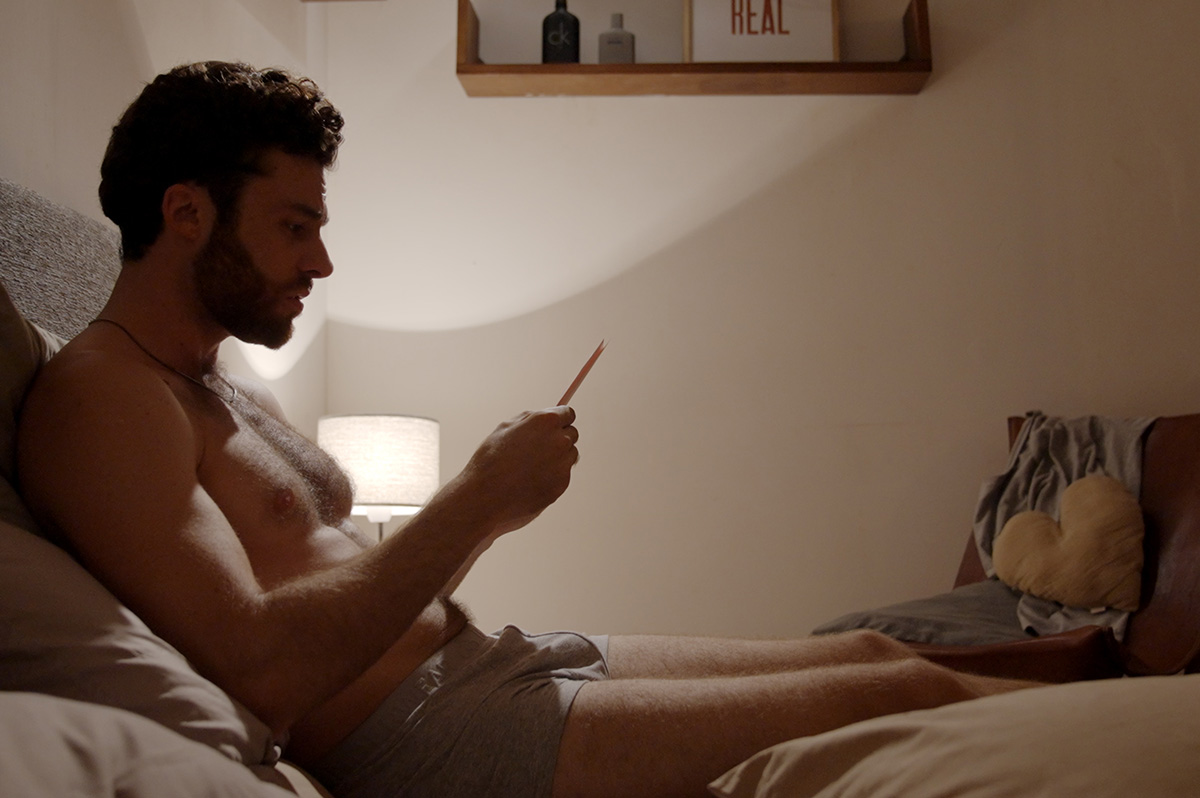
We’ve all known them. We’ve all watched those couples on our “friends” feed who seem to live a perfect life together; young, attractive, and devoted to each other, they present an aspirational image on social media, documenting their romance for friends, followers, and all the world to see. We can’t help but envy them, but at the same time, we can’t help feeling like it’s all just a little too good to be true – and inevitably, our instinct is eventually proven right by an abrupt and messy breakup that ends up being aired just as publicly as the rest of their relationship.
That’s the kind of couple that occupies the center of “300 Letters,” a self-described gay “anti-romcom” from Argentine filmmaker Lucas Santa Ana (“Memories of a Teenager”), which garnered acclaim on the festival circuit both in its native country and in the U.S. earlier this year. Now available for home viewing via Prime Video and other VOD platforms, it might just be the perfect alternative if you need a counterbalance to all the sugary sweet holiday romances that tend to dominate the seasonal content offerings.
It’s the saga of the one-year romance between Jero (Cristian Mariani) and Tom (Gastón Frías), an “opposites attract” couple who meet (on Grindr, of course), have great sex, and become a couple despite the differences in their status (Jero is a “masc”-presenting cryptocurrency bro, Tom a struggling queer radical poet) and their outlook on life; they move in together, building a relationship that – thanks to Jero’s popular social media profile – soon has its own fandom. Then, on their first anniversary together, Jero comes home from his Crossfit class with plans for the big celebration – only to find that Tom has packed up and moved out, ending their relationship and leaving behind only a box of letters as an explanation.
Jero, blindsided and devastated, is at first resistant to the letters, but – at the urging of his best friend Esteban (Bruno Giganti), who believes it will help him move on – he decides to read them; the story they tell reveals that his couplehood with Tom was never as he had perceived it to be. Built on sex and maintained through performative routine, there had been an underlying agenda hidden beneath it from the beginning. As he continues the painfully eye-opening process of learning the truth, he is forced to question his own honesty in the relationship – all while holding on to an attachment that may have been a performance all along.
We’ll admit it sounds like a gimmicky premise, and also kind of a downer, but there’s a sensibility behind “300 Letters” that somehow overcomes those pitfalls. Thanks to the conceit of learning the story through letters – sometimes out of order – we are gradually coaxed (along with Jero) toward our own conclusions and epiphanies as the details (and layers of complexity) become more clearly defined; it keeps us engaged through this gradual reveal, allowing time for the uncomfortable truths to sink in, and maintains a subtle sense of humor to keep the tone from being bogged down by melancholy.
According to Santa Ana, who also co-wrote the film with Gustavo Cabaña, all of that is by design.
“I love romantic comedies and breakup movies, and I wanted to combine them while also talking about something that interests me within the LGBT world,” the filmmaker says of his movie. “We always talk about the discrimination we suffer from outsiders, but we rarely think about the discrimination we inflict on ourselves due to the prejudices we carry. In ‘300 Letters,’ I wanted to explore this topic with a fun and relaxed perspective.”
It pays off better than you might expect. Thanks to the carefully balanced screenplay and the performances of its two leading men, it manages to point out the mismatched couple’s faults, flaws, and foibles, while also making them both relatable. In the end, we definitely get the message: the assumptions we have about other people shape our perceptions of them in ways to which we are usually blind, and the prejudices we carry can become self-fulfilling prophecies when we only see what we are looking for. More than that, it’s a refreshingly candid and mature exploration of relationships – and yes, gay relationships in particular – which reminds us that every love affair has meaning and value, and that even a failed one is worth having if it helps you learn how to do better next time.
On the flip side, it’s easy to imagine some viewers finding both characters tiresome. Jero is charming, and he’s definitely sexy, but he’s undeniably mired in a comfortably conventional queerness that makes us more inclined to sympathize with Tom – who is, himself, perhaps equally as judgmental in his assumptions about others, and who seemingly has no qualms about gaslighting his partner, but somehow still feels more “authentic” than Jero.
Fortunately, “300 Letters” is not the kind of movie that makes us choose between them. Instead, it invites us to see parts of ourselves in each of them, and in the end is really more about the “culture of presentation” – the obsession with projecting an appealing image, of seeking private validation through public display – than it is about holding up either of its protagonists for judgment. Instead, it leaves us to contemplate our own relationships in the light of self-awareness, never pulling the emotional punch that comes with loss and the grieving of a relationship, but somehow letting us see the wisdom that awaits us on the other side of it.
In the starring roles, Mariani and Frías are equally charismatic in their own distinctive way, capturing a chemistry that both “clicks” and doesn’t at the same time; Giganti also delivers a presence, subtly conveying his character’s unspoken role as the third point in a triangular relationship, There’s a deep complexity behind these characters that goes largely unspoken, but which emerges in their performances all the same; and if, in the end, the balance of our sympathies may have shifted more toward one of them than the other, that’s OK.
In Santa Ana’s deceptively breezy post-mortem of a break-up, that’s just how relationships go.
Movies
Holiday movie season off to a ‘Wicked’ good start
From Hallmark to horror, something for all tastes
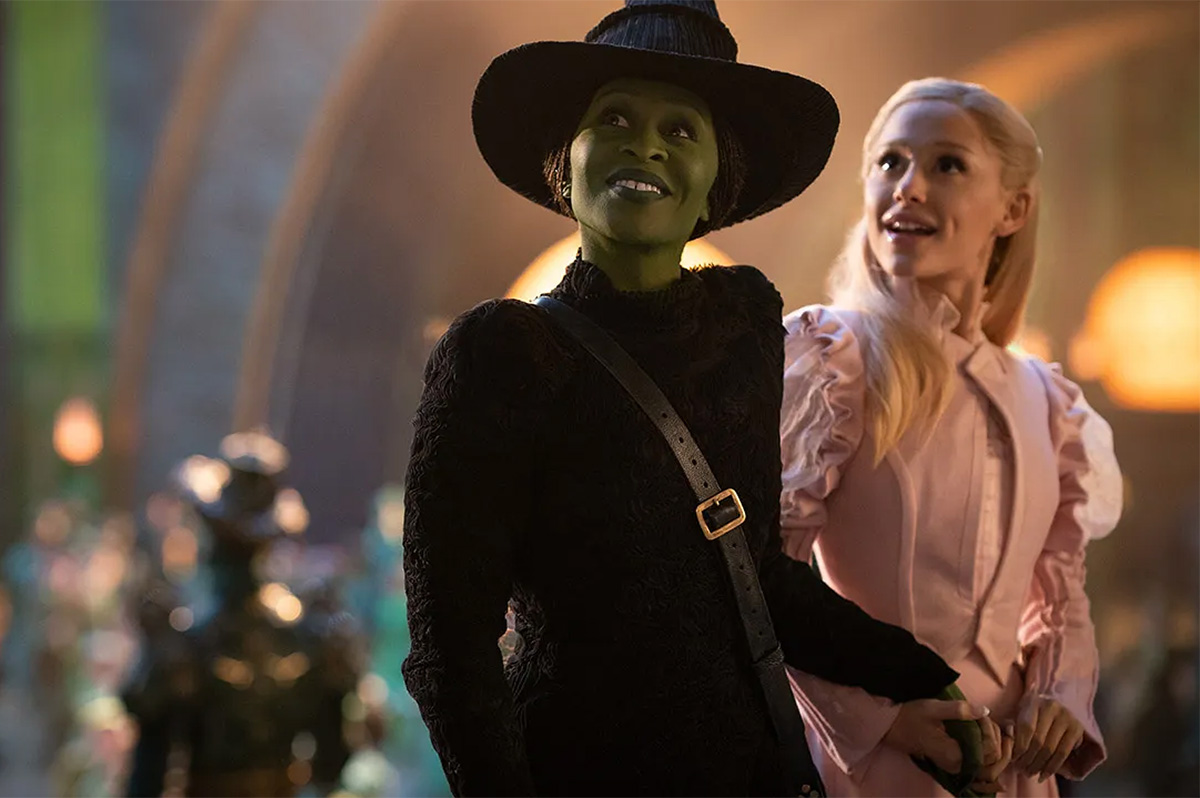
With Christmas just around the corner, it’s time to look ahead to the movies headed our way for December – and just like last year, the perfect film to launch it all is already here.
We’re talking, of course, of “Wicked: For Good” (now in theaters), the follow-up to last year’s smash adaptation of the hit Broadway musical that turns the witchy mythos of “The Wizard of Oz” inside out. A continuation rather than a sequel, director John M. Chu’s sumptuously crafted epic adapts the show’s second act to conclude the saga of green-skinned Elpheba – branded as a “wicked” witch by the authoritarian Wizard (Jeff Goldblum) for her rebellion against his suppression of Oz’s animal population – and her complicated relationship with “frenemy” Glinda (Ariana Grande-Butera), who is now serving as a sort of “double agent” by working to change the regime from within. As with the movie’s source material, there’s a definite “second act slump,” which Chu and co-screenwriters Winnie Holzman and Dana Fox attempt to counter with some minor retooling of the plot, incorporating more material derived from the Gregory Maguire novel that inspired it all, and adding a couple of new, original songs; it works, to a large degree, but the second half still lacks the bubbling sense of joy and excitement that made the first such an infectious hit.
Still, that’s just a quibble – and while this one may not leave us as giddy, it’s a worthy completion of the project, arguably improving the show by granting it levels of emotional resonance, political subtext, and overall depth that always seemed to be the missing element to the material. As for the cast (which also includes first out gay “sexiest man alive” Jonathan Bailey, alongside Michelle Yeoh, Marissa Bode, Ethan Slater, and Bowen Yang), they all continue to deliver powerhouse performances, breathing the kind of fully developed life into their fantastical characters that makes them all stick with us after the final high note is sung. So never mind the inevitable letdown that comes with the splitting of the story into two parts – taken as a whole, Chu’s “Wicked” saga is still a cinematic triumph that, frankly, very few of us expected it to be, and that’s hardly a reason to be disappointed.
As for the rest of the holiday season, there’s not much in the way of directly LGBTQ content coming to our screens – but there are still plenty of promising titles for us to look forward to.
Cutting to the chase for fans of the “Queer Christmas Romance” genre, we’re happy to report that Hallmark – the reigning champion of such fare – has two queer holiday entries lined up for you this season. First up is “A Keller Christmas Vacation” (Hallmark+, now streaming), a quirky tale of three adult siblings on a holiday cruise with their parents in Europe, each dealing with their own personal issues as they find “unexpected joy, romance, and family bonds” along the way – and gay heartthrob Jonathan Bennett, who’s pretty much become the poster boy for this genre, stars as one of them, with former Superman Brandon Routh providing extra eye candy for good measure. The second is “The Christmas Baby” (Hallmark, 12/21), starring Ali Liebert and Katherine Barrell as a lesbian couple who get a holiday surprise when they find a baby on their doorstep; they decide to adopt – which, naturally, requires them to negotiate the process of balancing their relationship and careers with the challenge of being new moms.
There’s also “The Christmas Writer” (Tello, now streaming) in which a lesbian romance author (Shelby Allison Brown) returns to her hometown in search of some Christmas spirit after the death of her mother, an ugly breakup, and a bad case of writer’s block. What she finds is a single lesbian mom (Callie Bussell), and flying sparks ensue.
For heartwarming Christmas cheer without the romcom trappings, there’s “Oh. What. Fun.” (Prime Video 12/3), which serves up Michelle Pfeiffer as a mom and grandma whose knack for putting on the perfect holiday gathering is taken for granted by her self-absorbed family – until they leave her behind on a family outing, forcing them to pull it together themselves. Pfeiffer leads an ensemble cast that includes co-stars like Eva Longoria, Felicity Jones, Denis Leary, Danielle Brooks, Jason Schwartzman, Maude Apatow, Joan Chen, and Chloë Grace Moretz as the queer daughter whose vegan girlfriend throws a last-minute wrench into the dinner menu. Sounds relatable!
Not holiday-themed but still a gift, “Merrily We Roll Along” (limited theaters 12/5) is the multiple-Tony-winning 2023 Broadway revival of Stephen Sondheim’s musical that tells the story – in reverse – of three high school BFFs as their relationship (and their ideals) shift across three decades. Featuring some of Sondheim’s most personal compositions, director Maria Friedman’s production of the show (starring Jonathan Groff, Daniel Radcliffe, and Lindsey Mendez) was immersively captured on film before closing in 2024 – and now, it’s on its way to movie screens as a special holiday treat for musical theatre lovers.
Likewise unseasonable and just as intriguing is “100 Nights of Hero” (limited theaters 12/5), an adaptation of the graphic novel by Isabel Greenberg (itself based on the classic folk tale “1,001 Nights”) in which a woman (Maika Monroe) is left alone by her neglectful husband (Amir El-Masry) for 100 nights at the estate of his seductive friend (Nicholas Galitzine, “Red, White, and Royal Blue”) as a test of her fidelity, with only her loyal maid (Emma Corrin, “The Crown”) as an ally. A sexy and stylish period fantasy with a queer-inlusive cast, it comes with buzzy acclaim from its Venice Film Fest debut, so we’ve definitely got this one on our list.
Kristen Stewart fans will be excited to see the debut of “The Chronology of Water” (limited theaters 12/5), the queer screen queen’s first film as producer, director, and co-writer. Adapted from Lidia Yuknavitch’s memoir, it stars Imogen Poots as a woman who overcomes personal trauma through her writing, and earned a lengthy standing ovation at its Cannes premiere earlier this year. The release is limited, with a wider expansion in early 2026 – but we’re confident it will be worth waiting for, if you have to.
“Hamnet” (Theaters, 12/12), from Oscar-winning director Chloé Zhao, delivers a speculative slice of behind-the-scenes history with a period tearjerker about William Shakespeare (Paul Mescal) and his wife, Agnes (Jessie Buckley), as they struggle to cope with the death of their 11-year-old son – a real-life tragedy that inspired the playwright in his creation of “Hamlet.” Advance reviews have offered high praise for this one, especially regarding Buckley’s performance; but as his fans know, Mescal is no slouch either, and they’ll no doubt be standing in line for this one whether they’re interested in Shakespeare or not. Emily Watson and Joe Alwyn also star.
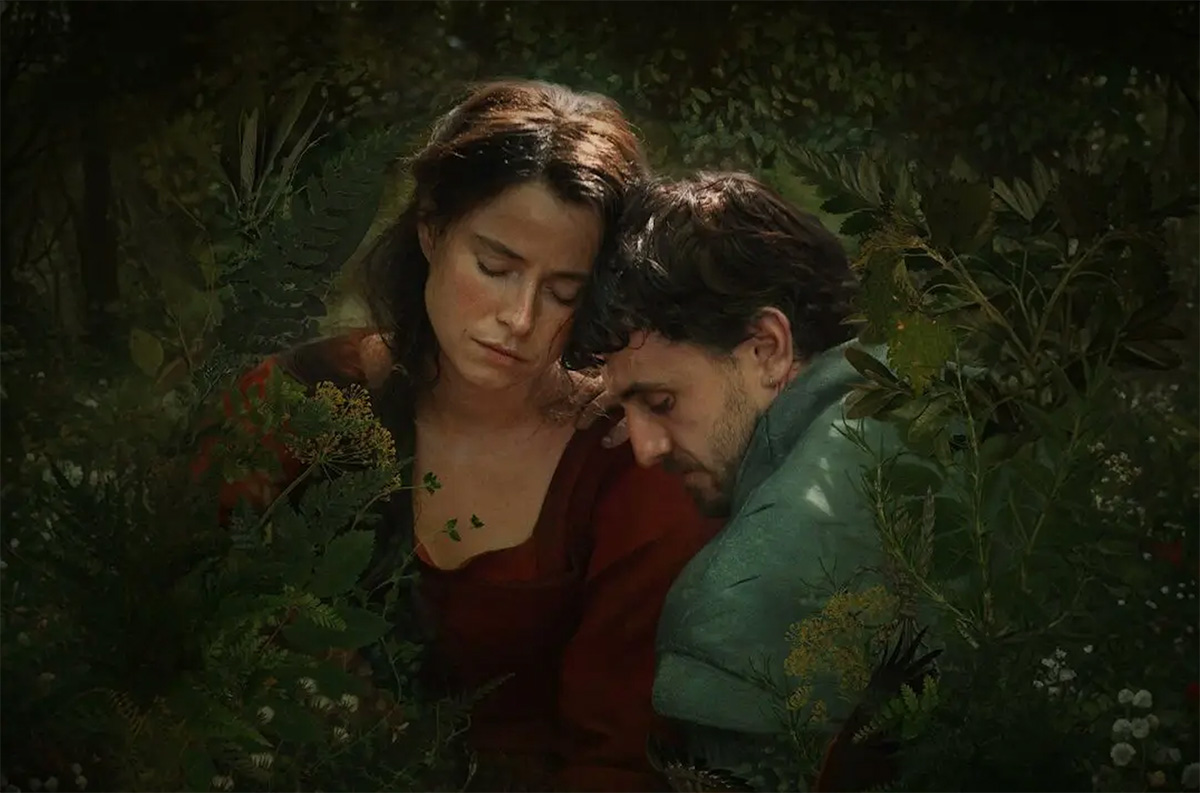
It’s been 15 years since iconic producer/director James L. Brooks has made a movie, but the “Terms of Endearment filmmaker is back this month with “Ella McCay” (theaters, 12/12), a political dramedy set in the Obama era, which follows a young Lieutenant Governor (Emma Mackey) as she prepares to take over after her boss and mentor (Albert Brooks) accepts a Cabinet position with the new administration. Also featuring popular and prolific queer ally Jamie Lee Curtis, alongside Jack Lowden, Kumail Nanjiani, Ayo Edebiri, and Woody Harrelson, it’s sure to be a highlight of the season – after all, besides all his movies, Brooks is the man responsible for “The Mary Tyler Moore Show” and “The Simpsons,” so the track record speaks for itself.
Daniel Craig returns for one more round as Master Detective Benoit Blanc in “Wake Up Dead Man: A Knives Out Mystery” (Netflix, 12/12), the third installment in filmmaker Rian Johnson’s series of all-star comedic “whodunnits” that both spoof and pay homage to the classic murder mystery genre defined by Agatha Christie and other authors of her era. This time, the eccentric gay detective investigates a murder within a devout church community centered around a charismatic priest (Josh Brolin), in what’s described as “his most dangerous case yet,” and the list of suspects includes Josh O’Connor, Glenn Close, Mila Kunis, Jeremy Renner, Kerry Washington, Andrew Scott, Cailee Spaeny, Daryl McCormack, and Thomas Haden Church. If it’s even half as diabolically clever as the first two films, it’s bound to be a fun ride.
Screen icon Kate Winslet makes her directorial debut (from a screenplay by her son, Joe Anders) with “Goodbye June” (limited theaters 12/12, Netflix 12/24), a Christmas-set British drama about a family that gathers around its ailing mother (Helen Mirren) as she prepares to face the end of her life on her own terms. Inspired by the personal experiences surrounding the death of Winslet’s mother from ovarian cancer, some audiences might find the subject matter too much of a downer for the holiday season, but a light-hearted and positive tone – along with an ensemble cast that includes Toni Collette, Johnny Flynn, Andrea Riseborough, Timothy Spall, and Winslet herself – is likely to take the edge off for those willing to include a touch of bittersweet flavor in their holiday season.
For those who love the immersive, imaginative spectacle of James Cameron’s “Avatar” franchise, “Avatar: Fire and Ash” (theaters, 12/19) makes its eagerly awaited debut this month, with a third installment that sees the Na’vi people enmeshed in further struggle with exploitative humans from Earth – which gives the phrase “it’s going to be a Blue Christmas” a whole new meaning. The cast includes returning players Sam Worthington, Zoe Saldaña, Stephen Lang, Sigourney Weaver, CCH Pounder, Giovanni Ribisi, Kate Winslet, Cliff Curtis, Edie Falco, Jemaine Clement, and multiple other veterans of the series.
Because sometimes you need a creepy psychological thriller to offset all the seasonal sweetness, versatile director Paul Feig’s “The Housemaid” (Theaters, 12/19) gives us Sydney Sweeney as in the title role, who takes a job as live-in servant to a wealthy woman (Amanda Seyfried) and her family, and slowly begins to discover the dark secrets lurking behind her new employers’ seemingly perfect life. Brandon Sklenar, Michele Morrone, and Elizabeth Perkins also star.
With “Father Mother Sister Brother” (limited theaters 12/24), acclaimed cult filmmaker Jim Jarmusch re-emerges with an anthology movie that follows three estranged family relationships in three different countries around the world. Its ensemble cast features Tom Waits, Adam Driver, Mayim Bialik, Charlotte Rampling, Cate Blanchett, Vicky Krieps, Sarah Greene, Luka Sabbat, and transgender actress Indya Moore (“Pose”) – and oh, by the way, it won the Golden Lion at this year’s Cannes Film Festival, so cinema enthusiasts are especially advised to consider it a “must-see” for their holiday season.
Finally, if you’re a member of the “Cult of Chalamet,” you’re probably already looking forward to “Marty Supreme” (theaters 12/25), in which the gifted young “It Boy” actor plays an ambitious ping pong player who “goes to hell and back” on his path to becoming a champion in the sport. Loosely based on the story of real-life table tennis champion Marty Reisman, it’s helmed by acclaimed director Josh Safdie (“Uncut Gems”) and co-stars Gwyneth Paltrow, Odessa A’zion, Kevin O’Leary, Tyler Okonma, Abel Ferrara, Sandra Bernhard, and Fran Drescher – but let’s face it, it’s going to be all about Timothée, and we’re perfectly fine with that.
With all those titles to choose from, we’re pretty confident you’ll have enough to keep you entertained until next year, when we can look forward to thrilling new releases like the much-anticipated “Pillion,” with Alexander Skarsgård – but we’ll have more on that for our next preview. For now, enjoy the seasonal offerings already on your plate.
Happy holidays!
Movies
Theater classic gets sapphic twist in provocative ‘Hedda’
A Black, queer portrayal of thwarted female empowerment
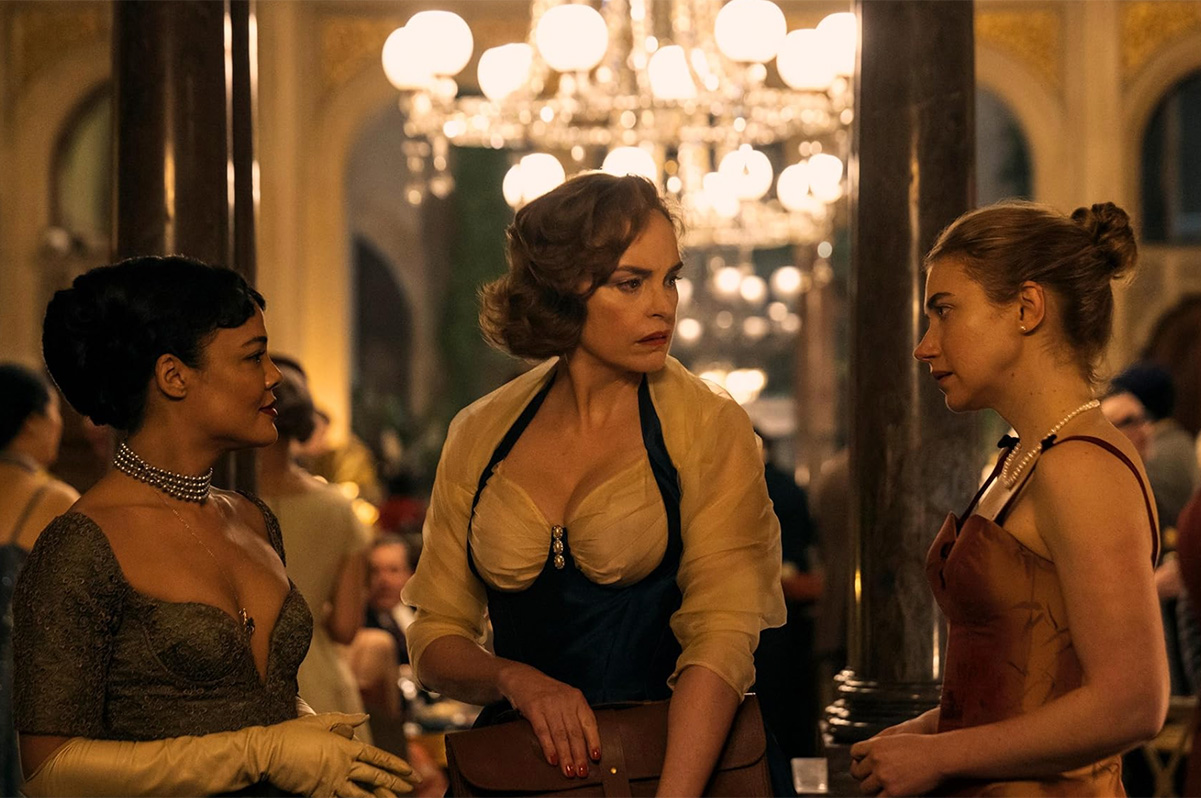
It’s not strictly necessary to know anything about Henrik Ibsen when you watch “Hedda” – the festival-acclaimed period drama from filmmaker Nia DaCosta, now streaming on Amazon Prime Video after a brief theatrical release in October – but it might help.
One of three playwrights – alongside Anton Chekhov and August Strindberg – widely cited as “fathers of “modern theater,” the Norwegian Ibsen was sharply influenced by the then-revolutionary science of of psychology. His works were driven by human motivations rather than the workings of fate, and while some of the theories that inspired them may now be outdated, the complexity of his character-driven dramas can be newly interpreted through any lens – which is why he is second only to Shakespeare as the most-frequently performed dramatist in the world.
Arguably his most renowned play, “Hedda Gabler” provides the basis for DaCosta’s movie. The tale of a young newlywed – the daughter of a prominent general, accustomed to a life of luxury and pleasure – who feels trapped as the newly wedded wife of George Tesman, a respected-but-financially-insecure academic, and stirs chaos in an attempt to secure a future she doesn’t really want. Groundbreaking when it premiered in 1891, it became one of the classic “standards” of modern theater, with its title role coveted and famously interpreted by a long list of the 20th century’s greatest female actors – and yes, it’s been adapted for the screen multiple times.
The latest version – DaCosta’s radically reimagined reframing, which moves the drama’s setting from late-19th-century Scandinavia to England of the 1950s – keeps all of the pent-up frustration of its title character, a being of exceptional intelligence and unconventional morality, but adds a few extra layers of repressed “otherness” that give the Ibsen classic a fresh twist for audiences experiencing it more than a century later.
Casting Black, openly queer performer Tessa Thompson in the iconic title role, DaCosta’s film needs go no further to introduce new levels of relevance to a character that is regarded as one of the theater’s most searing portrayals of thwarted female empowerment – but by flipping the gender of another important character, a former lover who is now the chief competition for a job that George (Tom Bateman) is counting on obtaining, it does so anyway.
Instead of the play’s Eilert Lövborg, George’s former colleague and current competition for lucrative employment, “Hedda” gives us Eileen (Nina Hoss), instead, who carries a deep and still potent sexual history – underscored to an almost comical level by the ostentationally buxom boldness of her costume design – which presents a lot of options for exploitation in Hedda’s quest for self-preservation; these are even further expanded by the presence of Thea (Imogen Poots), another of Hedda’s former flings who has now become enmeshed with Eileen, placing a volatile sapphic triangle in the middle of an already delicate situation.
Finally, compounding the urgency of the story’s precarious social politics, DaCosta compresses the play’s action into a single evening, the night of Hedda and George’s homecoming party – in the new and expensive country house they cannot afford – as they return from their honeymoon. There, surrounded by and immersed in an environment where bourgeois convention and amoral debauchery exist in a precarious but socially-sanctioned balance, Hedda plots a course which may ultimately be more about exacting revenge on the circumstances of a life that has made her a prisoner as it is about protecting her husband’s professional prospects.
Sumptuously realized into a glowing and nostalgic pageant of bad behavior in the upper-middle-class, “Hedda” scores big by abandoning Ibsen’s original 19th-century setting in favor of a more recognizably modern milieu in which “color-blind” casting and the queering of key relationships feel less implausible than they might in a more faithful rendering. Thompson’s searingly nihilistic performance – her Hedda is no dutiful social climber trying to preserve a comfortable life, but an actively rebellious presence sowing karmic retribution in a culture of hypocrisy, avarice, and misogyny – recasts this proto-feminist character in such a way that her willingness to burn down the world feels not only authentic, but inevitable. Tired of being told she must comply and cooperate, she instead sets out to settle scores and shift the balance of power in her favor, and if her tactics are ruthless and seemingly devoid of feminine compassion, it’s only because any such sentimentality has long been eliminated from her worldview. Valued for her proximity to power and status rather than her actual possession of those qualities, in DaCosta’s vision of her story she seems to willingly deploy her position as a means to rebel against a status quo that keeps her forever restricted from the self-realized autonomy she might otherwise deserve, and thanks to the tantalizingly cold fire Thompson brings to the role, we are hard-pressed not to root for her, even when her tactics feel unnecessarily cruel.
As for the imposition of queerness effected by making Eilert into Eileen, or the additional layers of implication inevitably created by this Hedda’s Blackness, these elements serve to underscore a theme that lies at the heart of Ibsen’s play, in which the only path to prosperity and social acceptance lies in strict conformity to social norms; while Hedda’s race and unapologetic bisexuality feel largely accepted in the private environment of a party among friends, we cannot help but recognize them as impediments to surviving and thriving in the society by which she is constrained, and it makes the slow-bubbling desperation of her destructive character arc into a tragedy with a personal ring for anyone who has ever felt like an outsider in their own inner circle, simply by virtue of who they are.
Does it add anything of value to Ibsen’s iconic work? Perhaps not, though the material is certainly rendered more expansive in scope and implication by the inclusion of race and sexuality to the already-stacked deck of class hierarchy that lies at the heart of the play; there are times when these elements feel like an imposition, a “what-if?” alternate narrative that doesn’t quite gel with the world it portrays and ultimately seems irrelevant in the way it all plays out – though DaCosta’s ending does offer a sliver of redemptive hope that Ibsen denies his Hedda. Still, her retooling of this seminal masterwork does not diminish its greatness, and it allows for a much-needed spirit of inclusion which deepens its message for a diverse modern audience.
Anchored by Thompson’s ferocious performance, and the electricity she shares with co-star Hoss, “Hedda” makes for a smart, solid, and provocative riff on a classic cornerstone of modern dramatic storytelling; enriched by a sumptuous scenic design and rich cinematography by Sean Bobbitt, it may occasionally feel more like a Shonda Rhimes-produced tale of sensationalized scandal and “mean-girl” melodrama than a timeless masterwork of World Theatre, but in the end, it delivers a powerful echo of Ibsen’s classic that expands to accommodate a whole century’s worth of additional yearning.
Besides, how often do we get to see a story of blatant lesbian attraction played out with such eager abandon in a relatively mainstream movie? Answer: not often enough, and that’s plenty reason for us to embrace this queered-up reinvention of a classic with open arms.
-

 The White House4 days ago
The White House4 days ago‘Lavender Scare 2.0’: inside the White House’s campaign against LGBTQ federal employees
-

 District of Columbia4 days ago
District of Columbia4 days agoActivists praise Mayor Bowser’s impact on city, LGBTQ community
-

 a&e features4 days ago
a&e features4 days agoMeet Mr. Christmas
-

 Puerto Rico4 days ago
Puerto Rico4 days agoPuerto Rico’s largest LGBTQ organization struggling amid federal funding cuts





